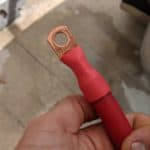
MENUMENU
TALK TO AN EXPERT
Special Hours: 7AM – 6PM PST
TALK TO AN EXPERT
Special Hours: 7AM – 6PM PST
Once you know the different types of batteries available for marine electrical systems, the next step is to compare the options available to determine which one is right for you. While lead acid batteries have been used on boats for decades, the newer technology of lithium-ion batteries offers many promising benefits. Let’s dive into the pros and cons of each to help determine which one will be best for your application!
Whether you’re starting with a blank slate or fed up with your current electrical system, it’s essential to compare the battery options available before making a decision. When evaluating whether to choose lead acid or lithium batteries for your boat power, here are five key differences to consider.
Lead acid batteries like to be fully recharged after each discharge. This can become particularly challenging on cruising boats that spend extended periods of time off the dock and away from shore power. Oftentimes, these batteries can’t be fully recharged which can ultimately lead to the death of a lead acid battery. On the other hand, lithium-ion batteries can operate to their full capacity without worry of harm, even at partial charge.
The current that a lead acid battery can accept will decrease as the charge finishes. So, the last 10-20% of the recharge will be much slower and take longer to complete. Lithium-iron-phosphate (LiFePO4) batteries have a much higher acceptance rate throughout the life cycle. This means that they will be able to recharge much faster than their lead-acid counterparts.
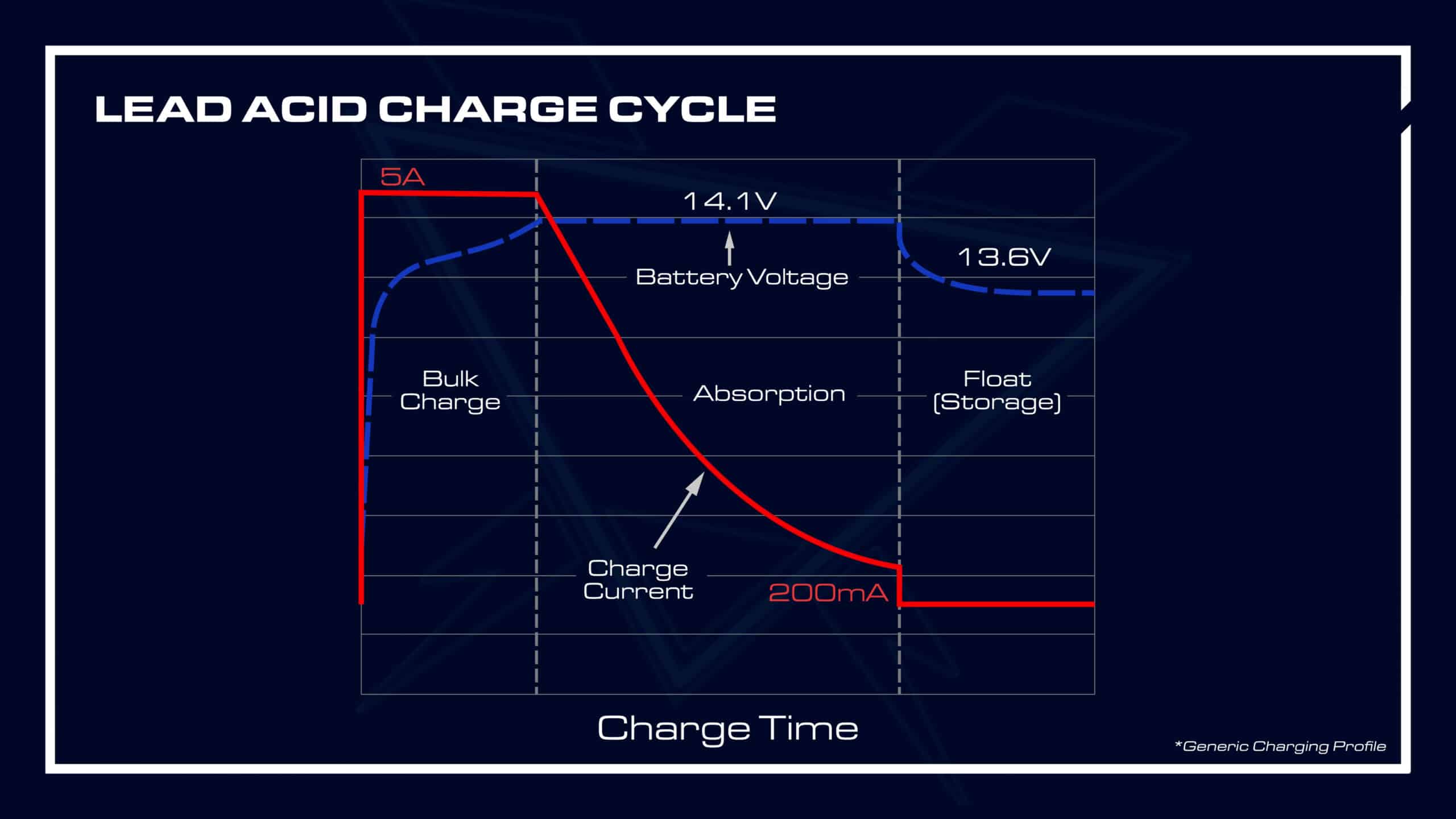
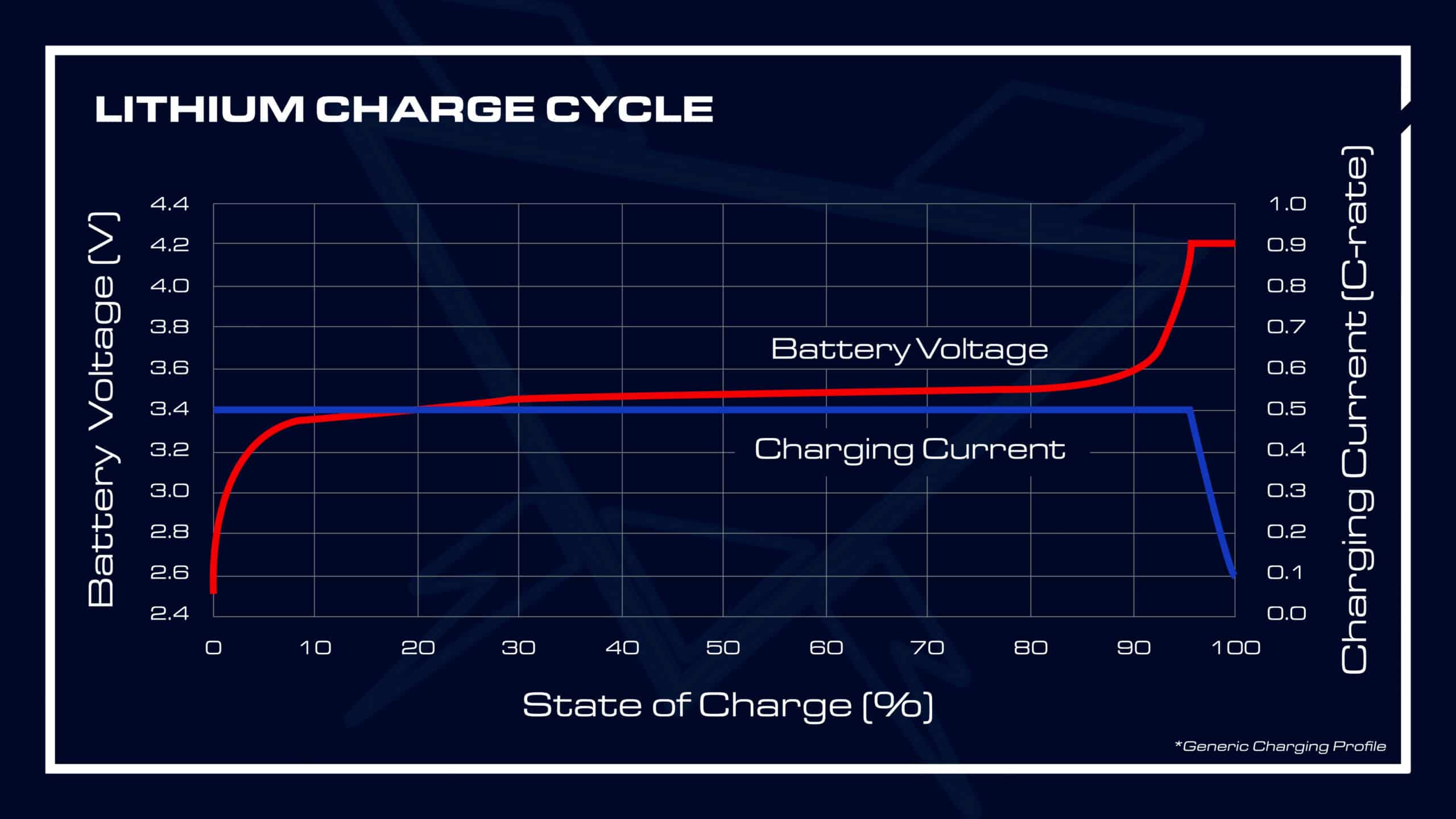
When it comes to useable capacity, lead-acid batteries are more restricted than lithium-ion batteries. Typically, only 50% of a lead-acid battery’s capacity is available. Discharging a lead-acid battery past 50% will significantly decrease the number of cycles you can get out of it. Battle Born LiFePO4 Batteries allow you to use 100% of their capacity without worrying about decreasing their life.
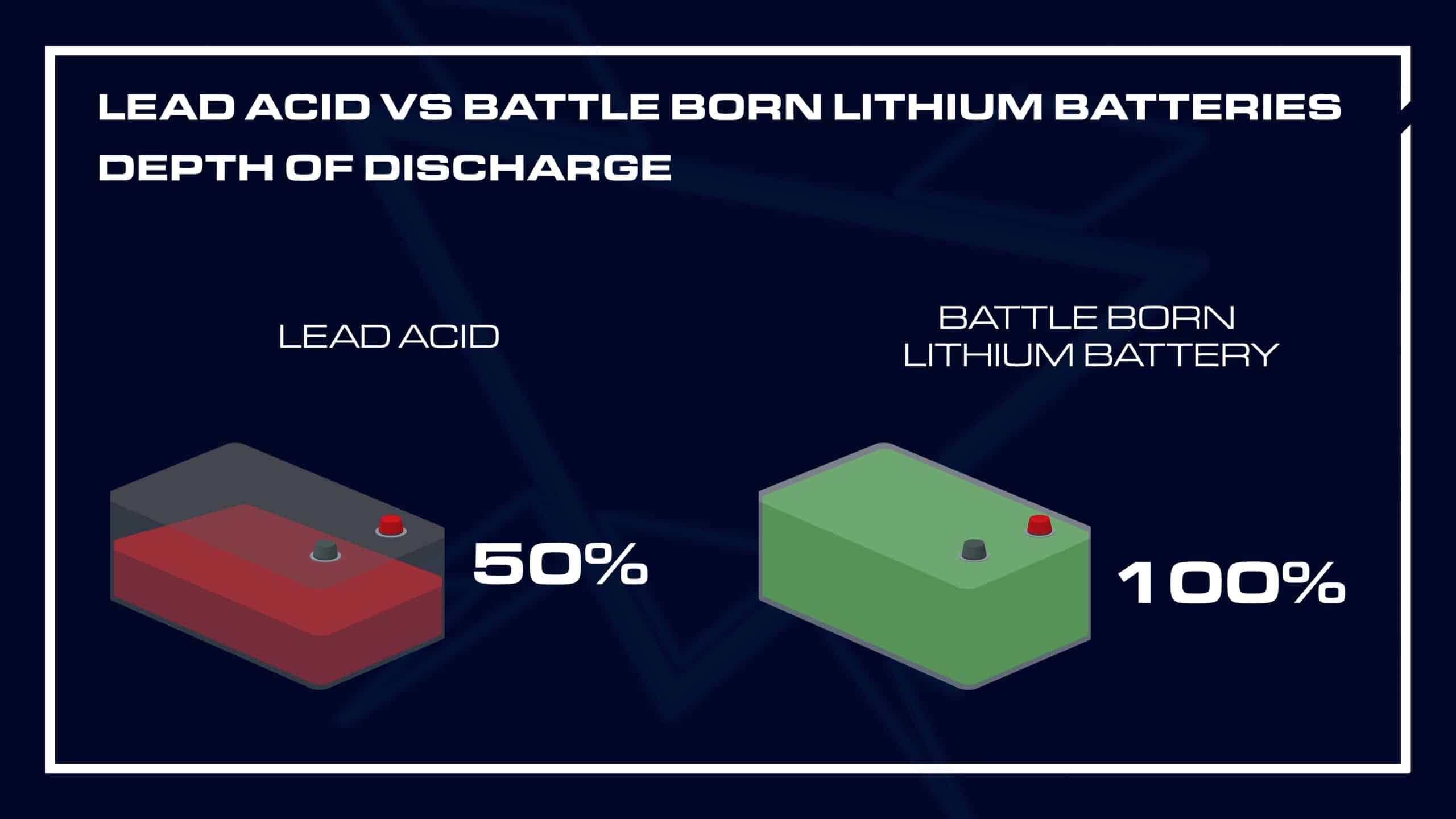
When compared to AGM Batteries, LiFePO4 batteries are much less impacted by temperature degradation. A leading AGM brand expects a 50% degradation in the life of the battery for every 18-degree rise in temperature above the recommended operating temperature, which is around 75°F. In comparison, Battle Born LiFePO4 batteries can operate in temperatures up to 100°F with minimal degradation. It’s not until temperatures rise over 100°F that Battle Born Batteries can see up to 30% total life expectancy degradation.
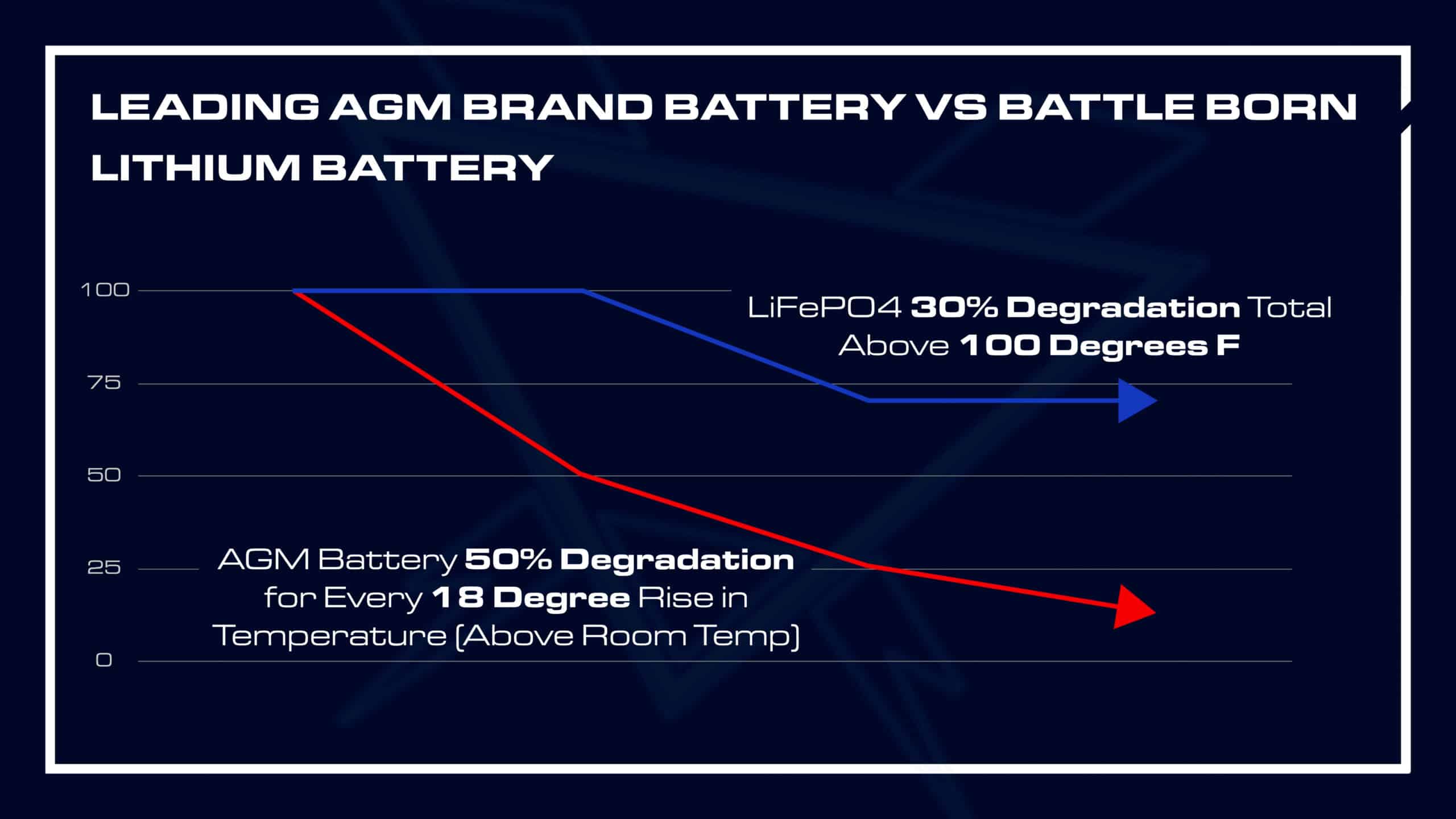
Lead acid batteries are significantly heavier than LiFePO4 batteries and have a much lower energy density. On average, an 8D lead acid battery weighs about 160 pounds. This makes it very difficult to move in and out of the boat and maneuver into tight spaces. On the other hand, Battle Born 8D Batteries are half the weight of lead acid, coming in at 80 pounds. This allows them to be much easier to move around and allows greater flexibility in placement within your boat as weight is less of a factor.
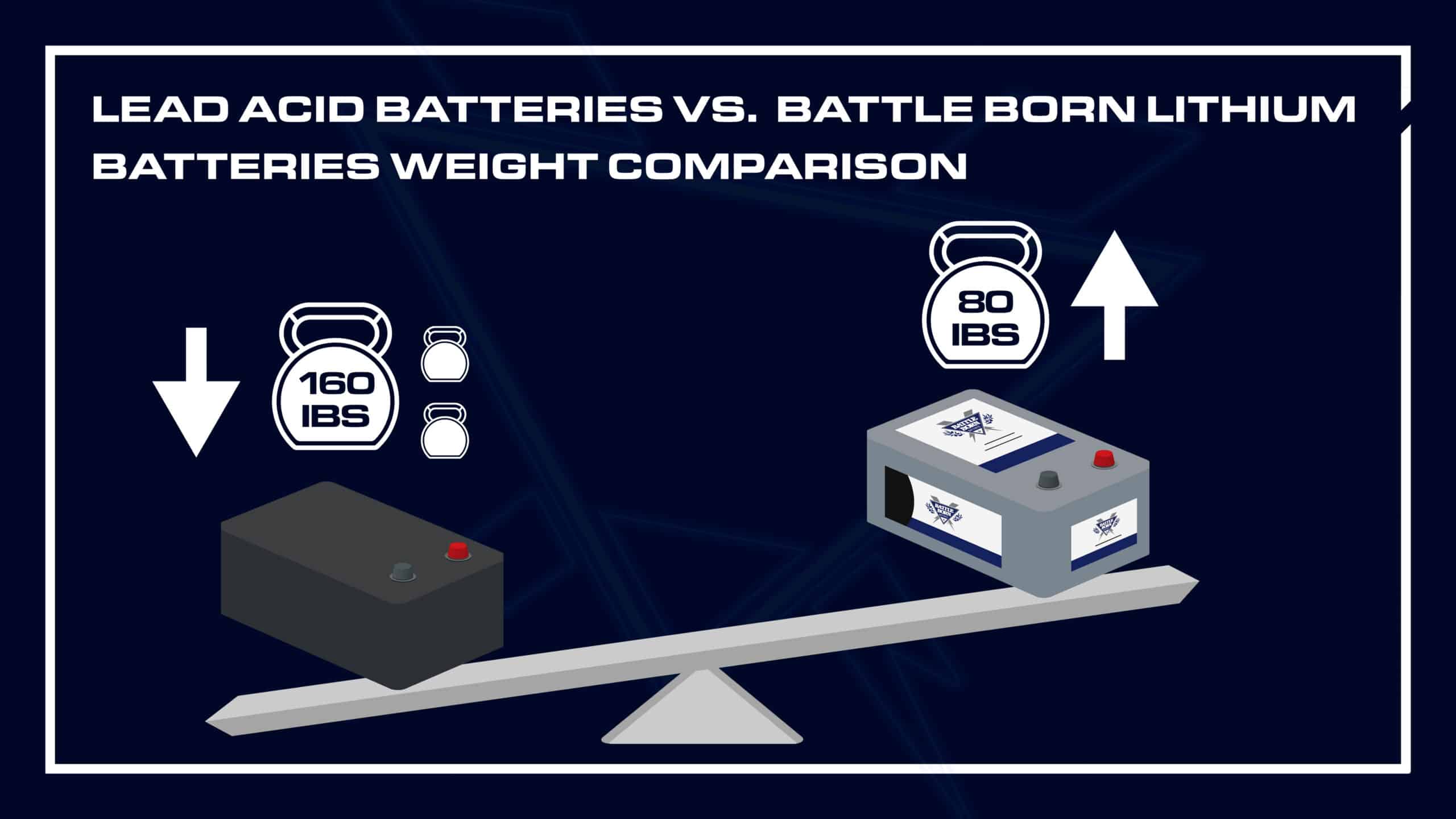
Check out the full Marine 101 series on our YouTube channel or through the Academy page on our website. If you have further questions or need help designing the perfect marine power system, our technical sales team would love to help! You can reach them by calling (855) 292-2831 or emailing [email protected].
Shop Best Sellers

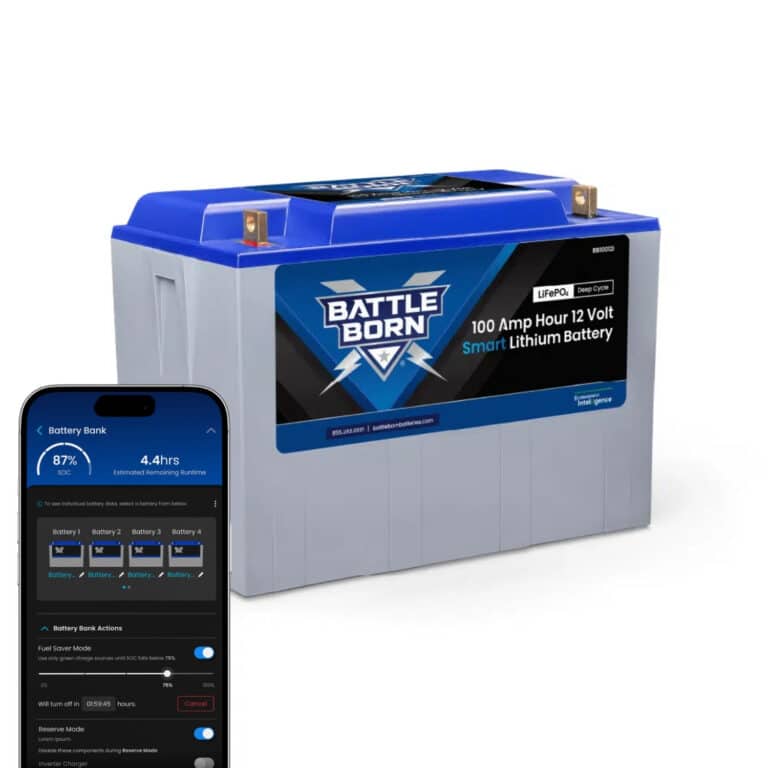

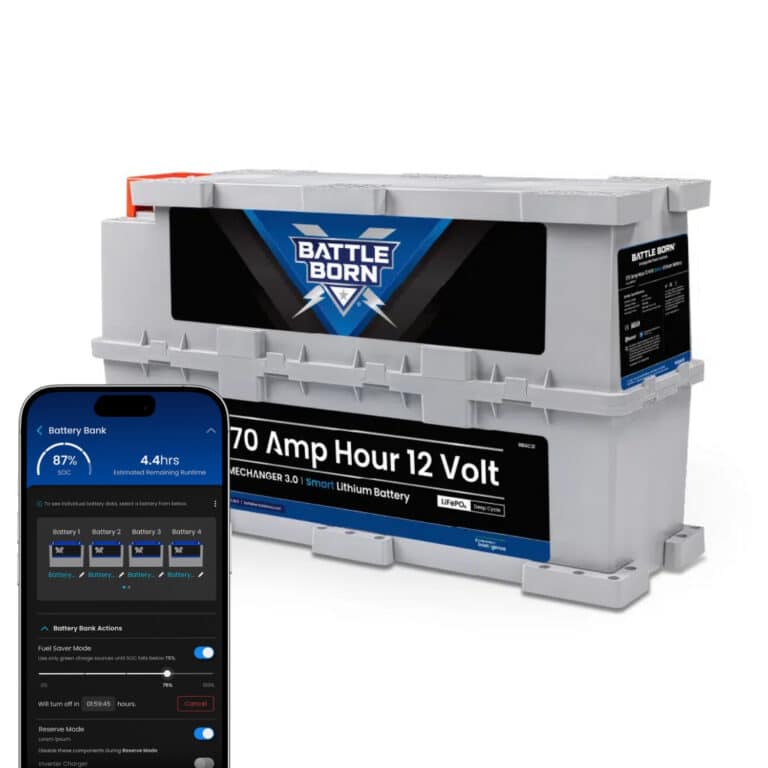




Ask a technical specialist now at 855.292.2831
Stay in the Know
Take our short Customer Survey for a chance to …
WIN a $300 Visa Gift Card